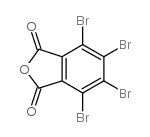| Structure | Name/CAS No. | Articles |
|---|---|---|
 |
Tetrabromophthalic anhydride
CAS:632-79-1 |
| Structure | Name/CAS No. | Articles |
|---|---|---|
 |
Tetrabromophthalic anhydride
CAS:632-79-1 |